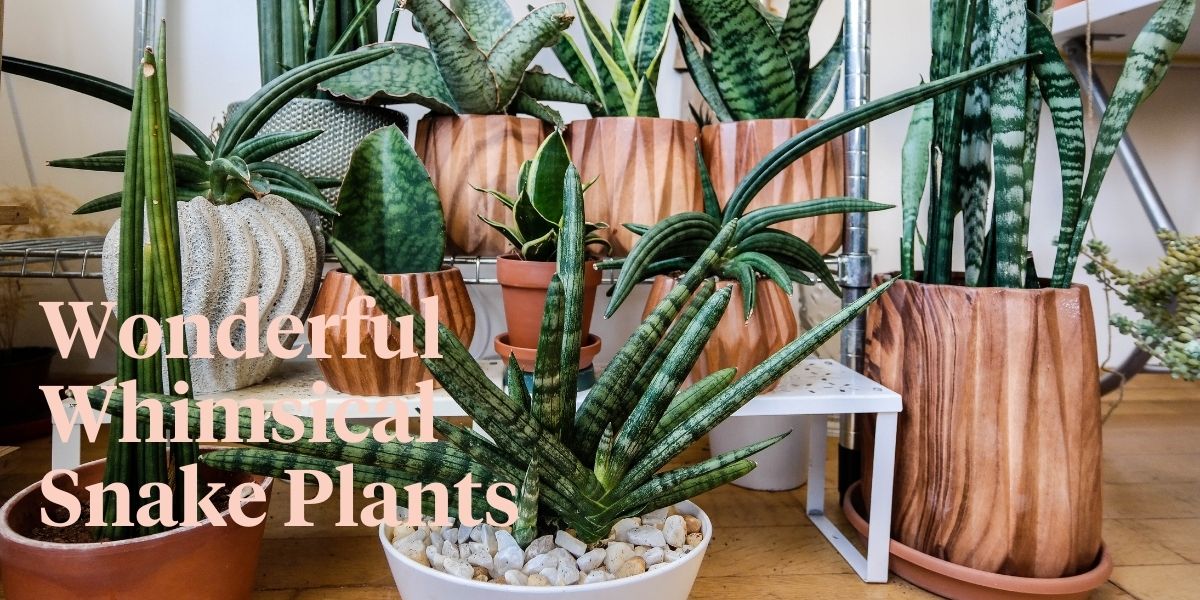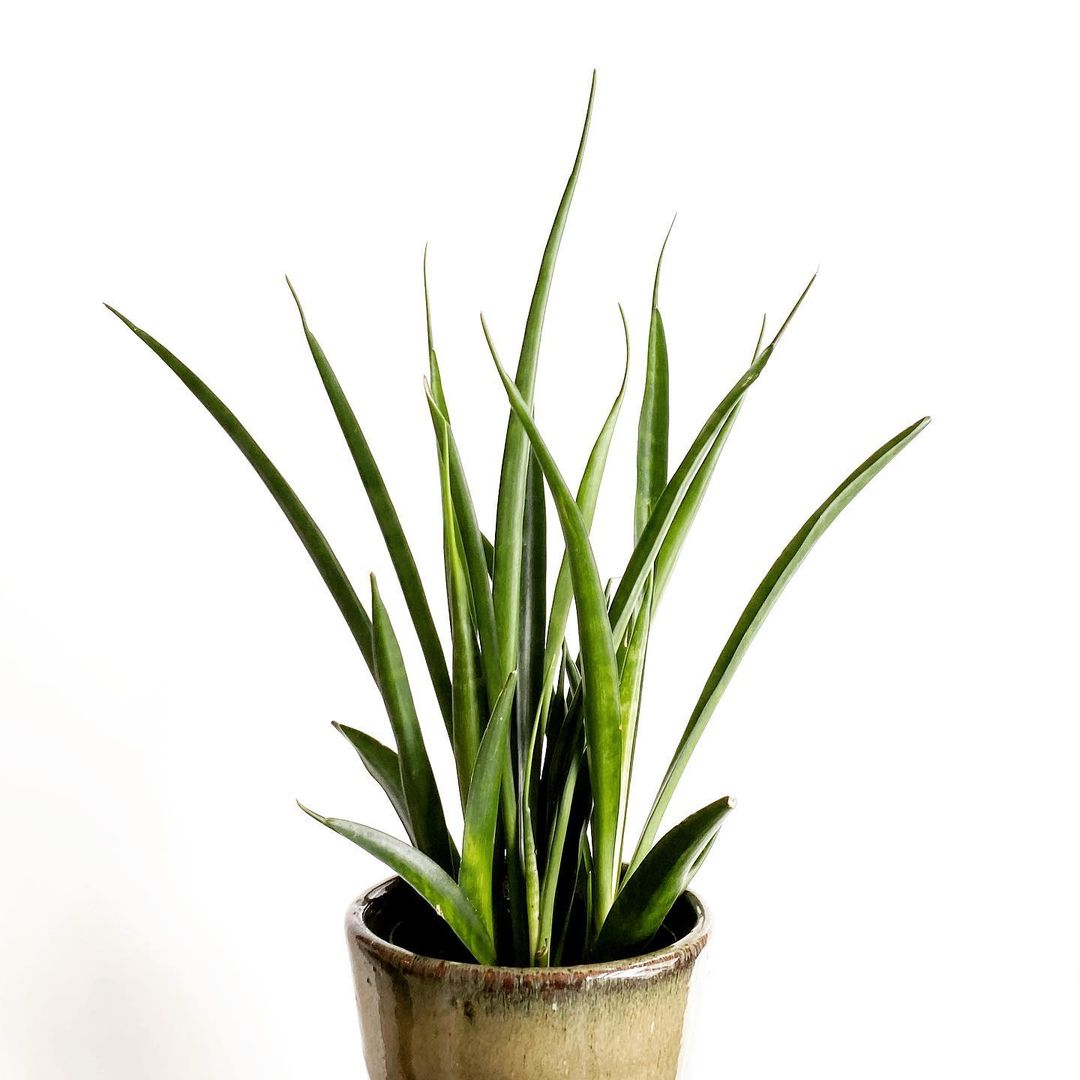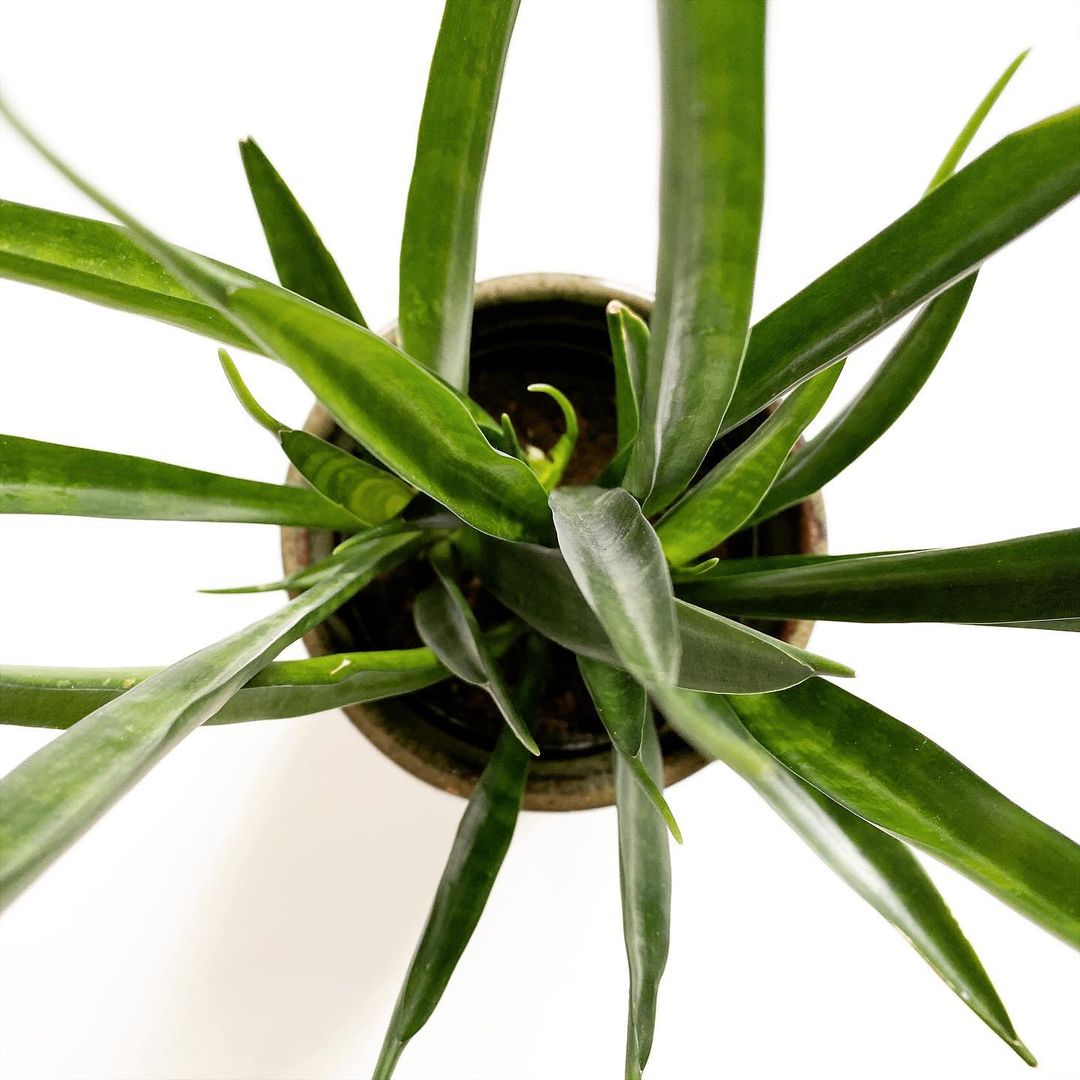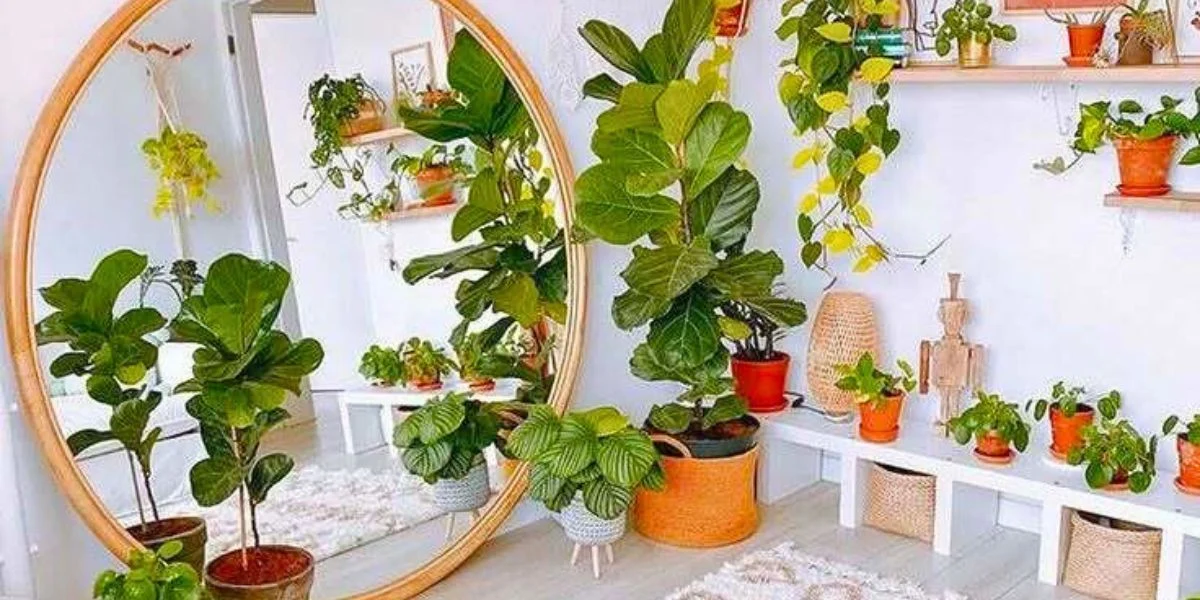For a long time, it seemed people had somehow forgotten about the whimsical charm of the snake plant. Luckily, snake plant varieties were rediscovered as pretty ornamental plants for your home several years ago, and they have been gaining in popularity ever since.
Certainly, nowadays, it doesn't take much effort to notice different varieties of snake plants grown decoratively to spruce up practically all indoor and outdoor spaces that look uninteresting. With the numerous types of snake plants available, it appears to be making a revolutionary comeback in the decorative plants' space.
The 10 Types Of Snake Plants You’ll Want To Know
Snake plants' generally slightly odd appearances and whimsical charm are the biggest draws for many people. Typically, you get several large and upright leaves in a variety of colors that are very eye-catching. The different types of snake plants are therefore a great way to fill in a bare space in your home.
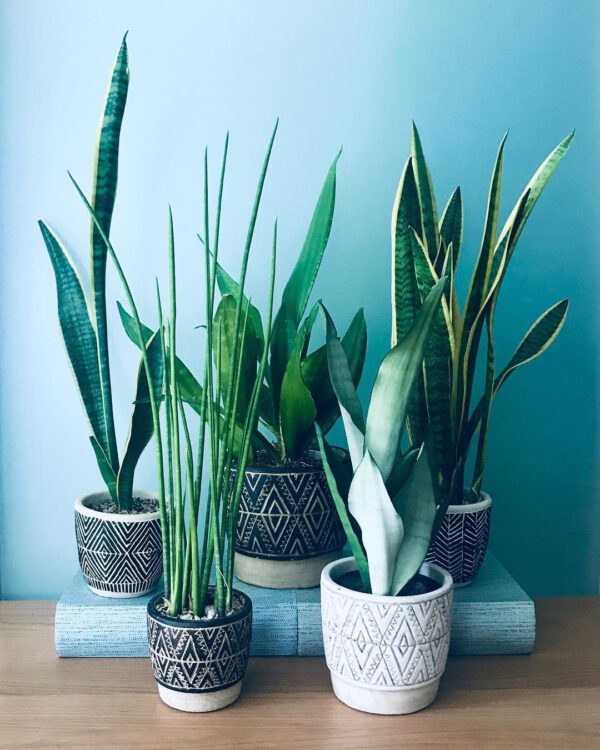
The snake plant is also very popular because it’s really easy to care for, and this makes it an acceptable plant for beginners or people who don’t have a lot of time to baby a plant to ensure it stays healthy. That notwithstanding, snake plant care is an important factor to have in mind to ensure that you fully enjoy the plants' benefits. Snake plants are also considered lucky for your home according to Vastu Shastra.
Sansevieria family - the botanical name of the snake plant - currently consists of more than seventy different varieties, making it daunting to decide which one you should add to your plant collection. This is especially true if you've never had a snake plant at home before.
Here are some great ideas for snake plant varieties that may interest you:
Sansevieria Francisii
Originating from Kenya, this snake plant variety features spiked, upturned leaves, and it grows in a trunk shape. It can get up to a foot tall at full maturity, and it has marbled leaves that go from dark to light green. It tolerates everything from partial shade to full sun, and it likes to be in dry soil. Watering it too much will induce root rot, so only water it when the soil dries out. Fertilize it in the spring.
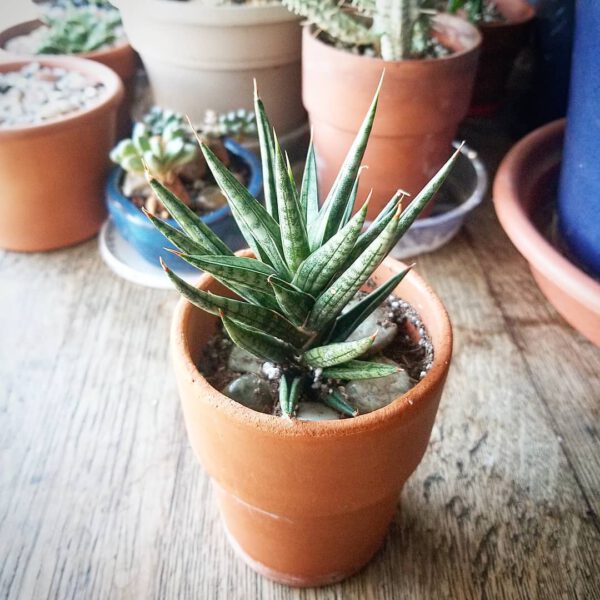
Sansevieria Parva
Long narrow deep green lance-shaped leaves stretch to lengths of 10 to 22 inches in a delicate arching appearance. Parva grows in groups of 6 to 12 leaves and then forms runners effectively creating its own colony. In the summer delicate flower spikes emerge boasting multiple fragrant white flowers.
Commonly grown as office plants, it is one of those plants that can survive under periods of extreme neglect. Due to their toughness and ease of growth, they are the perfect snake plant for indoors or on the urban balcony.
Sansevieria Bacularis
Coming in at just over five feet tall at full maturity, this snake plant variety does well planted in containers. The leaves are very long, and they have a darker green coloring with lighter transverse bands of color on them before they fade to a soft white at the tips. It also produces an eye-catching white snake plant flower with a purple stripe in the spring months.
It needs a bright and warm location to flourish, and you should water it sparingly. It’s a drought-resistant plant that likes to be outside during the summer and brought back in before the cooler weather comes around.
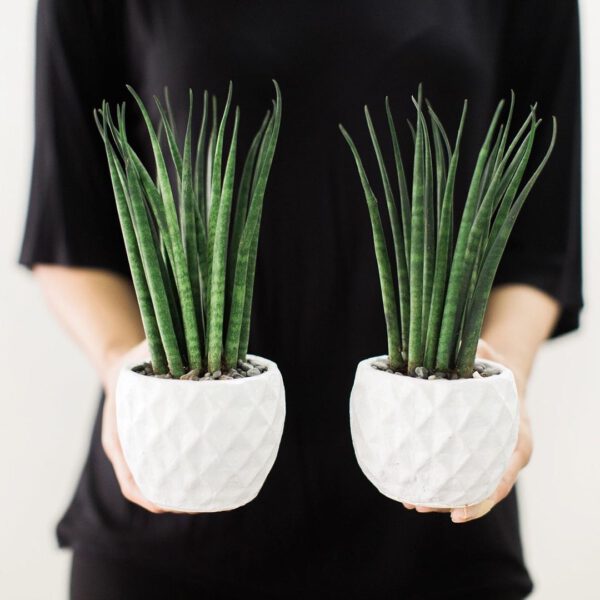
Sansevieria Hyacinthoides
Sansevieria Hyacinthoides looks like a larger Sansevieria Trifasciata, having wider and taller flat leaves, deep green in color, marked with pale green spots, and typical, thin, reddish, dry margin. It is a good indoor snake plant and it is neglect-tolerant because it can spend weeks or months without water!
Plant in well-drained garden soil mixed with plenty of compost and mulch. Water little and regularly until established, after which water need only be supplemented when the soil gets dry.
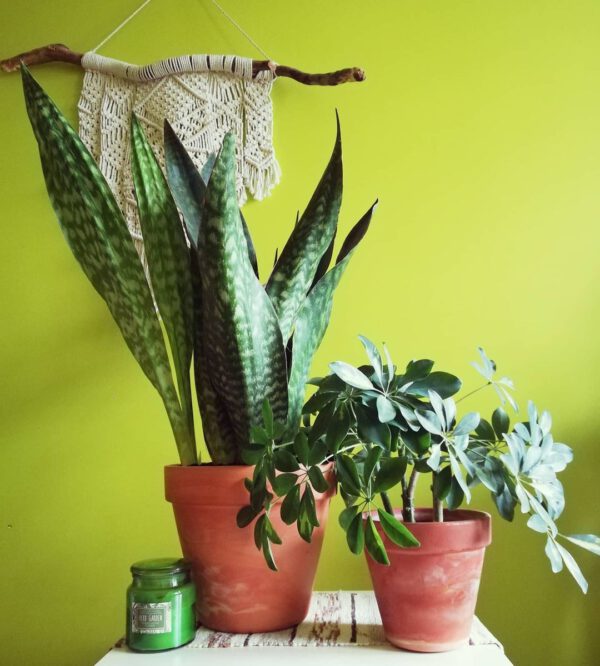
Sansevieria Zeylanica
Sansevieria Zeylanica is a tough, hardy snake plant. The long sword-like leaves are dark green with wavy lighter green bands. They have rather a rugged, shabby-chic appearance often with rough, brown edges. Some minor leaf cracking is also common.
Sansevieria Zeylanica is not as common as Sansevieria Trifasciata, but they are just as bullet-proof and just as stunning. Easy care, shade-loving, hard to kill, air-purifying; these beautiful plants have it all.
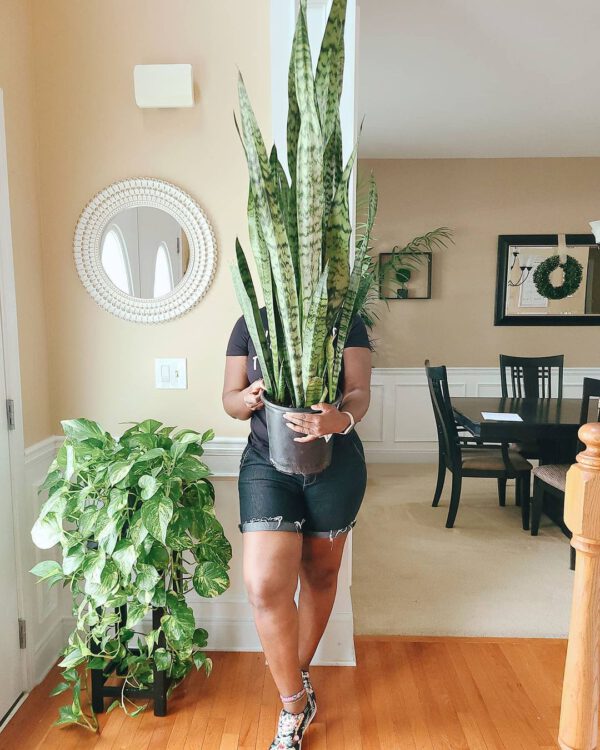
Sansevieria Trifasciata
This is one of the best-known snake plant varieties available, and it comes from Western Africa. It’s better known as the Mother-in-Law Tongue, and it grows tall leaves with creeping rhizomes. The leaves are grass green with light green or white stripes. The snake tongue plant grows surprisingly well in narrow pots, and it likes slightly sandy soil that drains very well between watering sessions.
This plant likes partial shade to full sun, and it’s resistant to drought. You may want to periodically wipe the dust off the leaves with a damp cloth to keep them healthy and take care not to overwater them. It’s excellent for removing toxins from the air too, and another great choice for indoor plants.
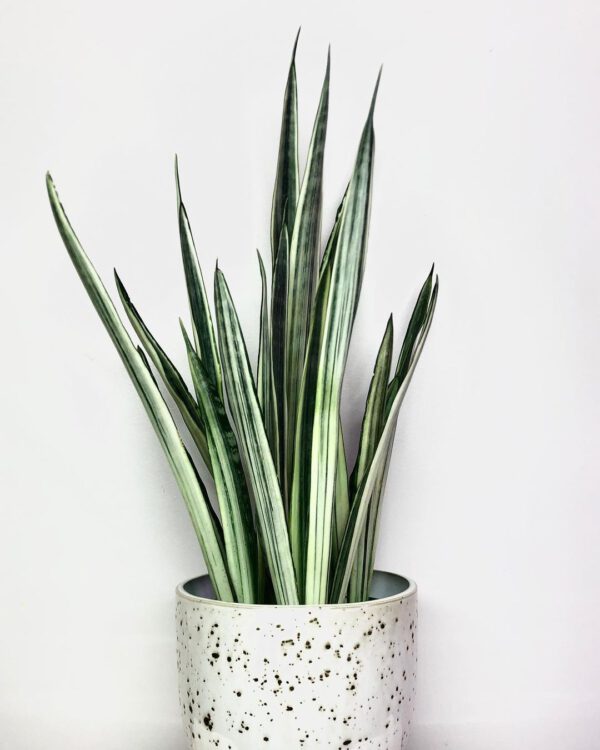
Sansevieria Subspicata
Tropical-looking, unusual upright plants produce a rosette of thick, wide occasionally striped, lightly wavy margined leaves. Short in stature, Subspicta is a great candidate for smaller urban collections where space is limited. In spring and early summer, delicate lightly scented flowers emerge from medium-tall stalks.
Commonly grown as office plants, it is one of those plants that can survive under periods of extreme neglect. Due to their toughness and ease of growth, these snake plants are perfect for growing indoors or on an urban balcony.
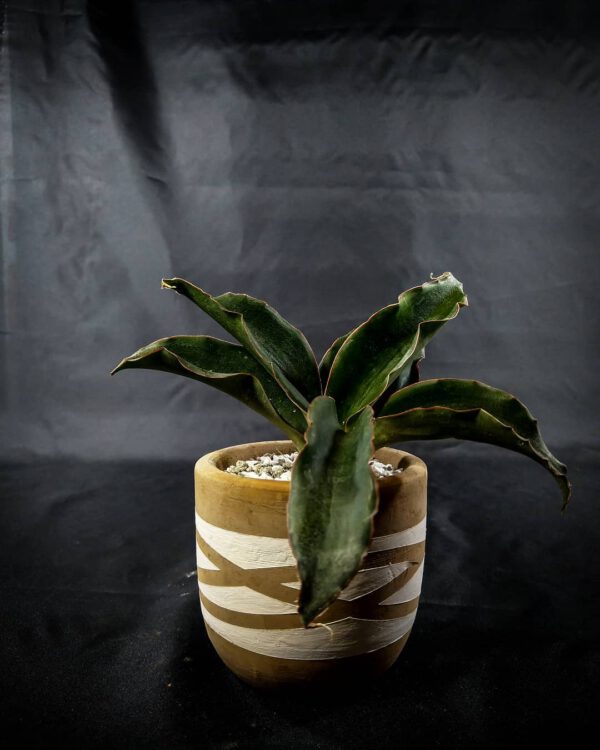
Sansevieria Kirkii
Better known as the Star snake plant variety, this plant offers wide leaves that taper to a point, and it has a host of light markings. The leaves will grow up to six feet tall, and they can get 3.6 feet wide at the widest point. It grows a dark green coloring, and you can grow them in large clumps indoors or out.
The spiky look with tall leaves is very eye-catching, and it does well in sandy but well-drained soil. Plant it in an area that gets partial shade to full sun, and water it when the top layer of the soil starts to dry out. It’ll produce a spike of white, feathery flowers from the center, and this is where it gets the name of the Star Snake Plant.
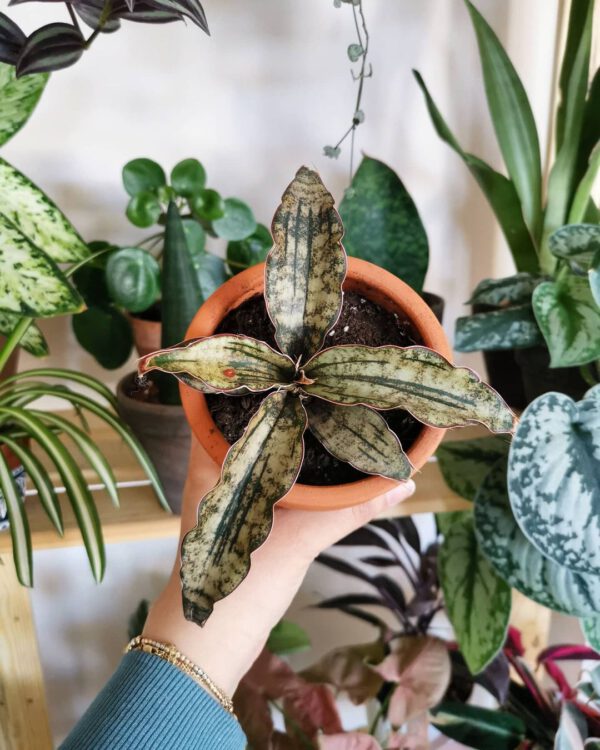
Sansevieria Hahnii
The cast-iron qualities of the snake plants have merit, but not everyone likes their tall stiff appearance. Several 'rosette' varieties of smaller and more graceful designs are available. These 'squashed-down' types known as bird's nest Sansevieria varieties are just as tough as any of the older, upright types.
This snake plant variety has very broad leaves that taper to a slight point, and they have light and dark green striped markings that run horizontally on the leaves. The leaves will form clusters as they grow to look like funnels. It’s a shorter plant that will only get around a foot tall at full maturity.
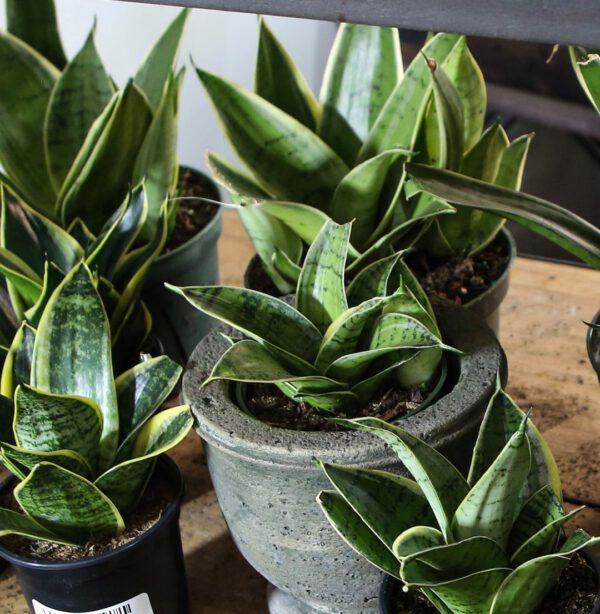
Sansevieria Masoniana
This snake plant type is better known as Shark’s Fin or Whale Fin snake plant. It’s native to the central portion of Africa, and you get very broad leaves with a mottled pattern that can get up to four feet long. They’re paddle-shaped foliage that can be variegated. It has a purple-banded sheath to make it easy to identify.
They thrive in bright light, and they won’t bloom if you put them in partial or full shade. Never leave this plant standing in water, and only water it when the top layers of soil dry out.
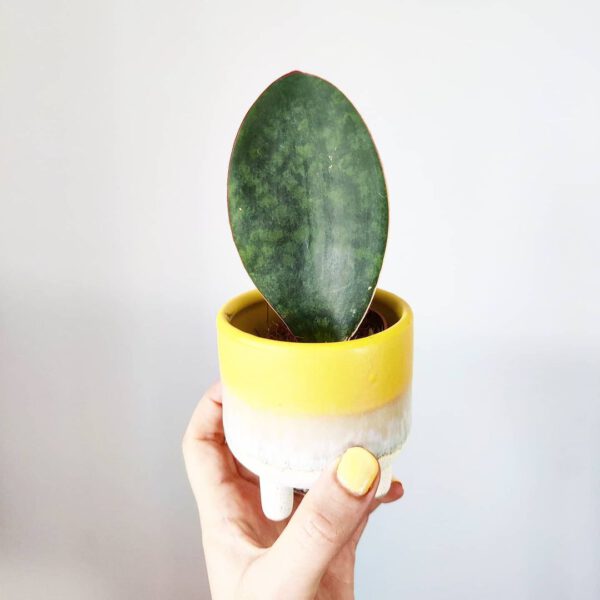
Snake Plant Benefits: Here Are 10 Benefits for You and Your Home
Snake plants are versatile plants. It has a myriad of benefits for both the home and the individual growing them. The 10 benefits of snake plants include:
Snake Plants Purify the Air
Snake plants are known for their ability to purify indoor air. They remove toxins such as formaldehyde, benzene, and trichloroethylene from the air that we breathe. These plants are especially useful in bedrooms since they release oxygen at night and improve the overall air quality.
Snake Plants Are Easy to Care For
Snake plants are also one of the easiest plants to care for. These plants require minimal watering regimens and can tolerate a wide range of light conditions. This makes them the ideal plant of choice for busy individuals or those who lack a green thumb.
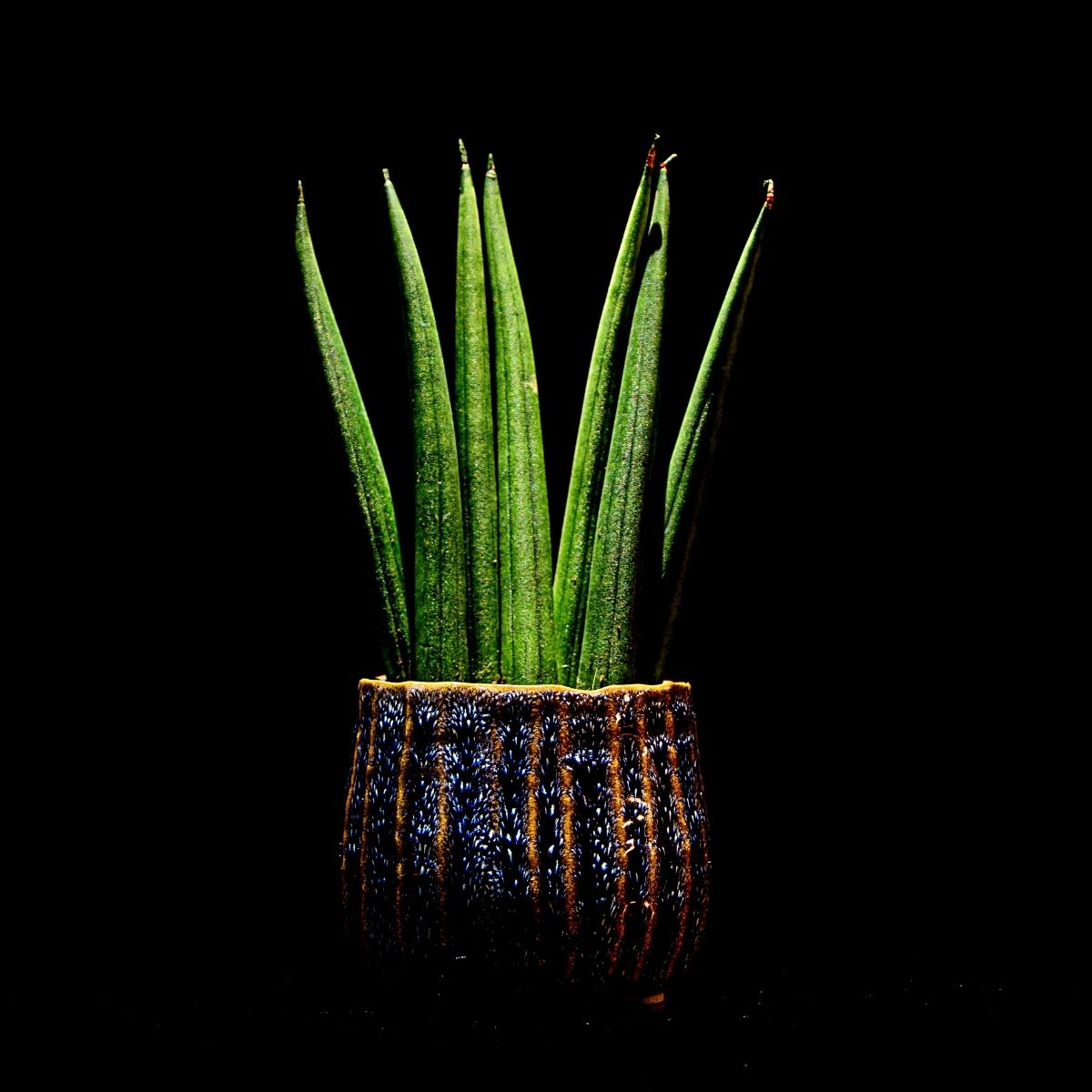
Photo by Organisatieservice on Pixabay
The Snake Plant Has Numerous Health Benefits
Every Snake plant variety is believed to have a range of health benefits, including improving sleep quality, reducing headaches, and boosting energy levels. The plant also has antibacterial properties that can help to purify the air and promote a healthy living environment.
Snake Plants Have an Aesthetic Appeal
The aesthetically appealing nature of the snake plant also makes it an interesting plant to have in the home. It has an interesting shape and pattern that can add a unique touch to any room. Snake plants come in different sizes and varieties, from the classic tall, upright leaves to dwarf varieties that are perfect for small spaces.
There is a reason why these plants are picked as one of the best plants in the ever-so-trendy Scandinavian interiors.
Snake Plants Improve Sleep
Snake plants release oxygen into the air at night. This can help improve air quality and in turn, promote better sleep.
Snake Plants Are Decorative
With their unique look and interesting leaf patterns, snake plants make for an eye-catching addition to any room. Who wouldn’t want to have such an interesting feature in their indoor space? Did you know, these plants are quite dear to Gigi Hadid. Here are some other celebrity favorite flowers and plants you should check out.
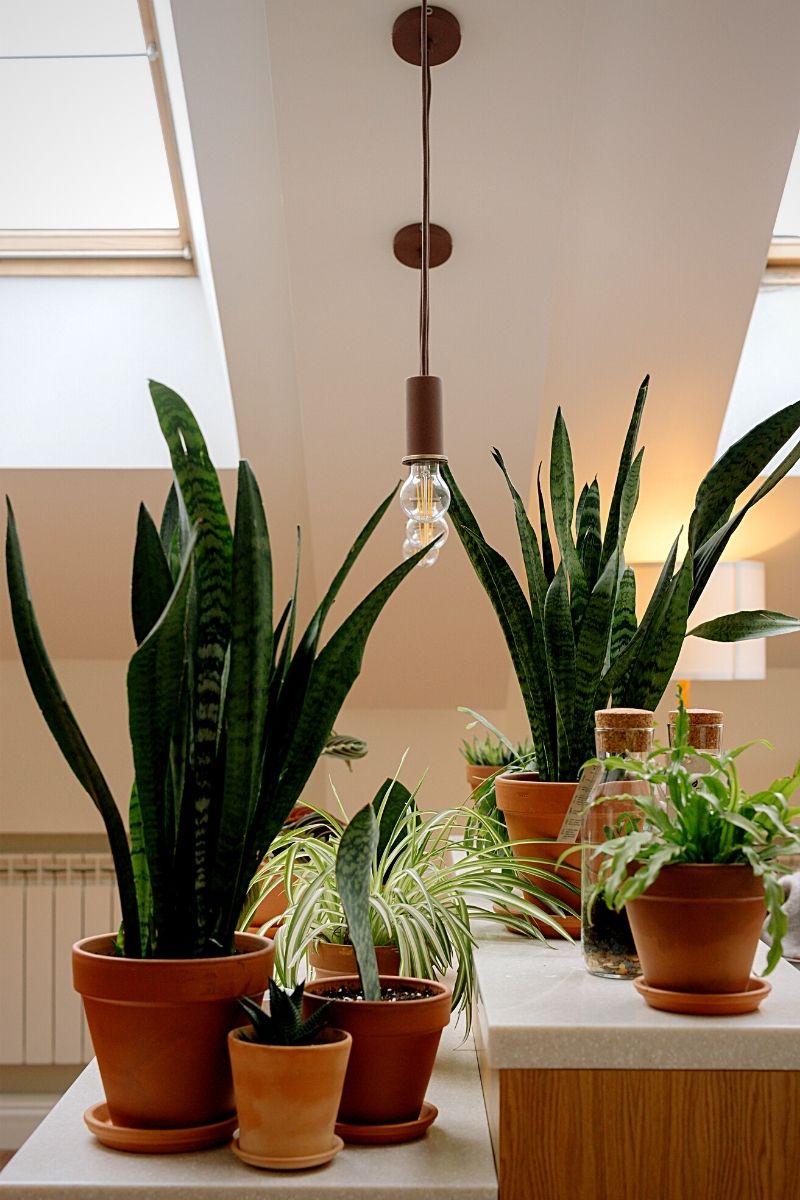
Photo by cottonbro studio on Pexels
It's Easy to Propagate a Snake Plant
You do not need to study rocket science to know how to propagate snake plants. They are perhaps the easiest plants to propagate and can be done through division. This, essentially, means that from just a few plantlets, you can create more plants that you can share with friends or add to your collection.
Snake Plants Are Drought-Resistant and Increase Humidity
Snake plants can tolerate long periods without water, making them a great plant for forgetful or busy plant owners. These plants, at the same time, release moisture into the air, helping to increase humidity levels in your home.
Snake Plants Improve Workplace Productivity
Studies show that having plants in the workplace can improve productivity and reduce stress. Snake plants, accordingly, are a great choice for offices and workspaces as they require minimal care and can thrive in low-light conditions without much care and attention.
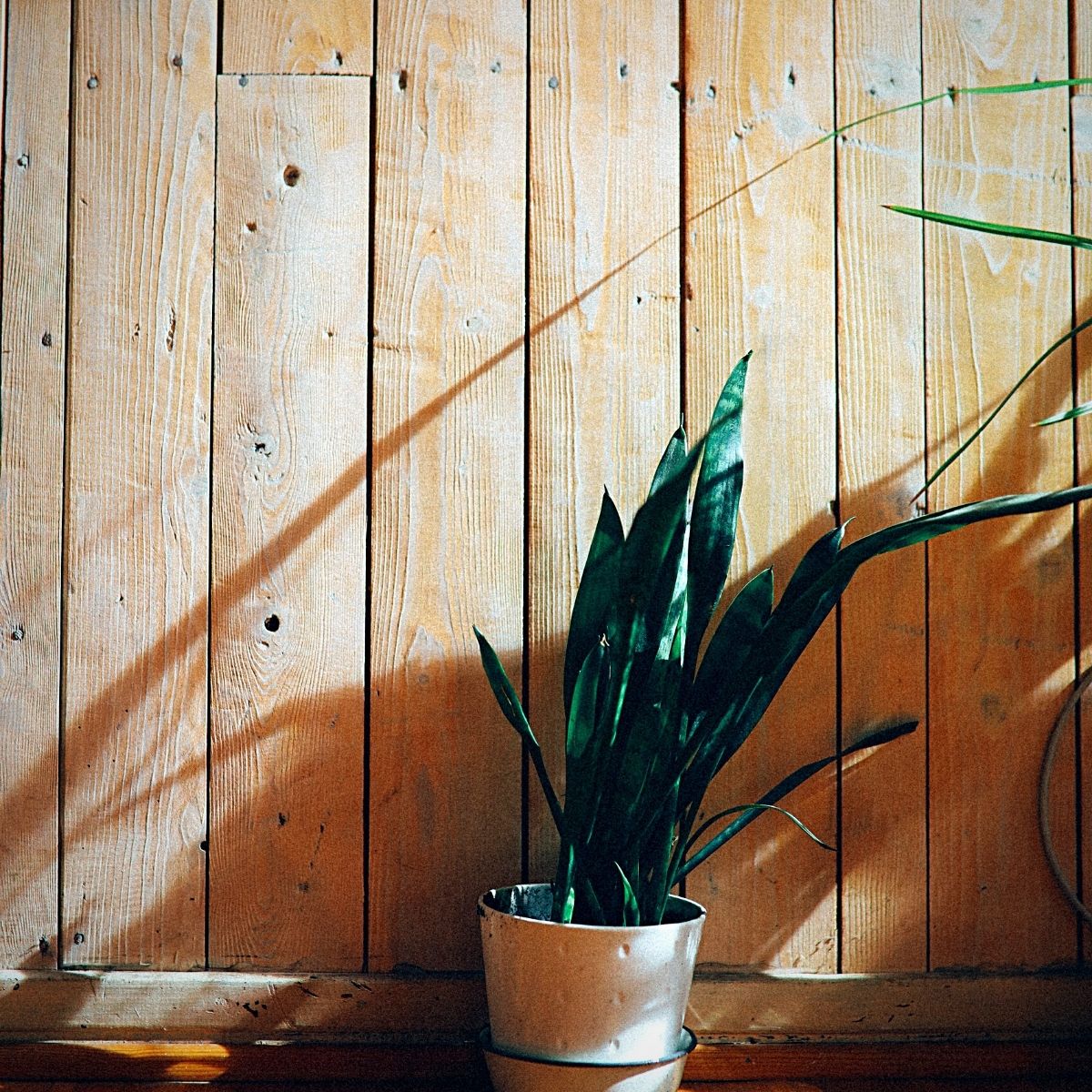
Photo by KoolShooters on Pexels
Snake Plants Are Low Maintenance
Snake plants are hardy and require very minimal care after you've planted them and they've acclimatized themselves to the conditions. They can tolerate low lighting conditions and when it comes to watering them, this can be done only sparingly.
How Do You Take Care of the Snake Plant?
Sansevieria, as snake plants are also called, are easy to care for, making them an ideal choice for beginners or anyone who wants a low-maintenance plant. By following some simple snake plant care guidelines, your plant should thrive, affording you years of aesthetics.
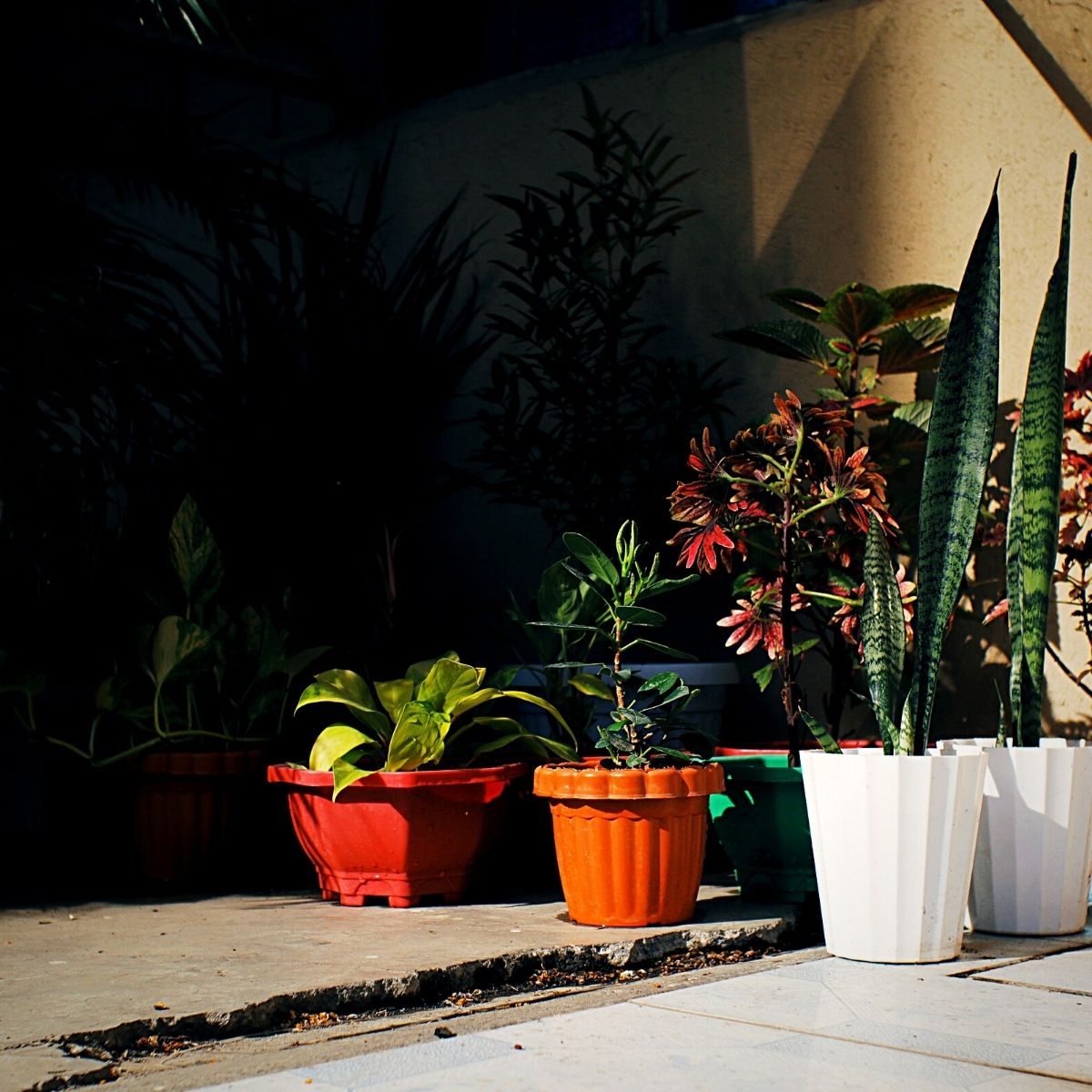
Photo by Nothing Ahead on Pexels
Here are some simple tips for taking care of the snake plant varieties that you may have.
Snake plants can tolerate a wide range of light conditions, from low to bright indirect light. However, they will grow best in bright, indirect light. It is therefore important that you keep it away from direct sunlight, as it can burn the leaves.
Being succulent plants, snake plants store water in their leaves. Allow the soil to dry out between watering, and always be careful not to overwater them as this can lead to root rot. During winter, you can water the plant less frequently.
Snake Plant Propagation
Snake plants thrive well in well-draining soil, such as cactus soil or a mix of regular potting soil and sand. Avoid heavy or clay soils, as they can hold too much moisture and cause root rot to the plant. The decorative snake plant does not require pruning, but you can remove any yellowing or damaged leaves to keep the plant looking neat and healthy.
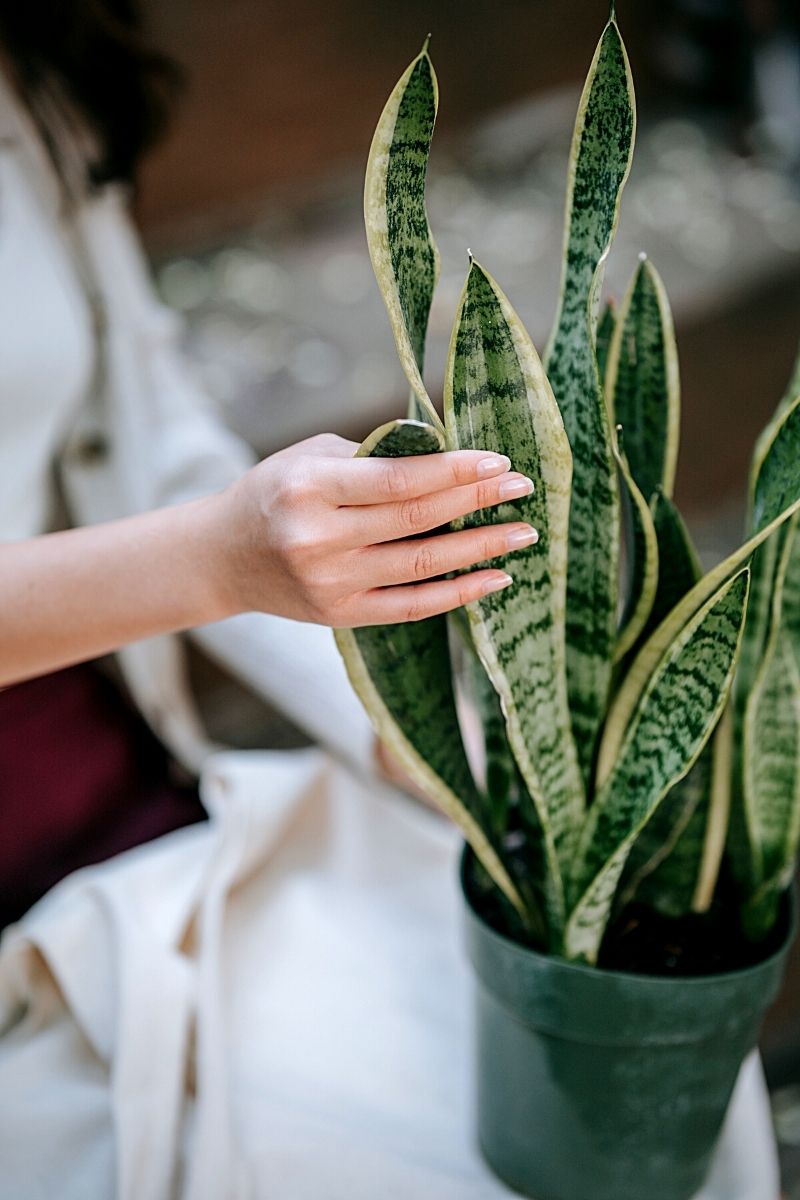
Photo by Sasha Kim on Pexels
When you want to propagate your snake plant, you can easily do this by dividing the rhizomes. These are the root systems of the plant. You just need to separate the rhizomes and plant them in new pots and that’s it! Snake plant propagation is just that easy. Snake plants also prefer temperatures between 15-30° Celsius (60-85°F). They can tolerate lower temperatures, but avoid exposing them to very low temperatures below 10° Celsius (50°F).
The plants do not require frequent fertilization. You can, however, feed them once or twice a year with a balanced fertilizer during the growing season, especially in spring and summer.
Are Snake Plants Toxic to Cats or Dogs?
While these kinds of plants are an appealing option to have in your home, snake plants are mildly toxic to cats and dogs if ingested. The plant contains mildly toxic chemicals called saponins, which can cause gastrointestinal upset such as vomiting and diarrhea if consumed in large quantities.
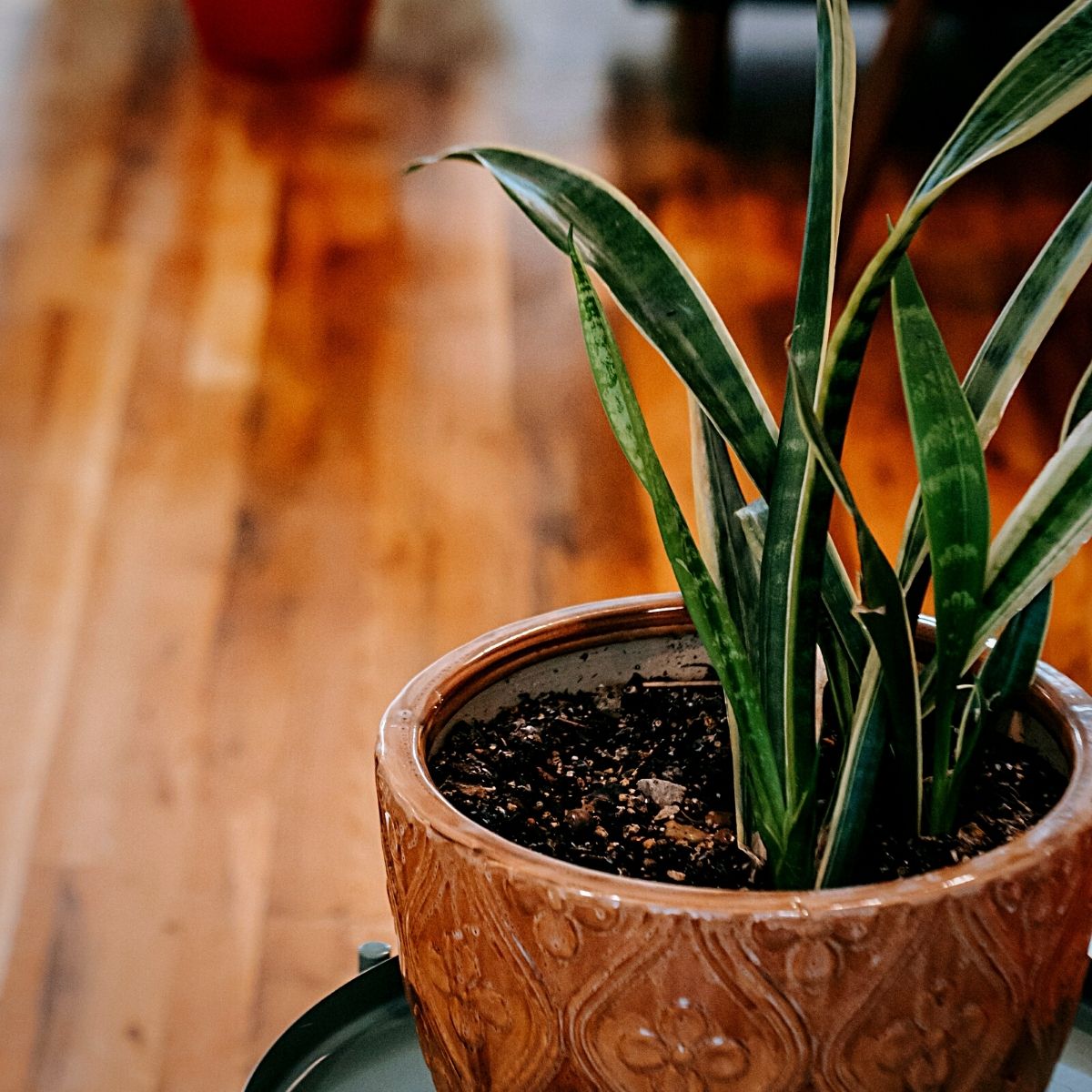
Photo by Charlotte May on Pexels
Symptoms of this toxicity may include nausea, vomiting, diarrhea, drooling, and lethargy. If your pet has ingested any part of a snake plant, it's important to monitor them for any signs of toxicity and contact your veterinarian if the symptoms manifest.
Snake Plants Create a Dramatic Statement
Accordingly, it is recommended to keep snake plants out of reach of pets to prevent accidental ingestion. If you have a curious pet who likes to nibble on plants, you may want to consider choosing a pet-safe alternative or placing the snake plant in an area that your pet cannot access.
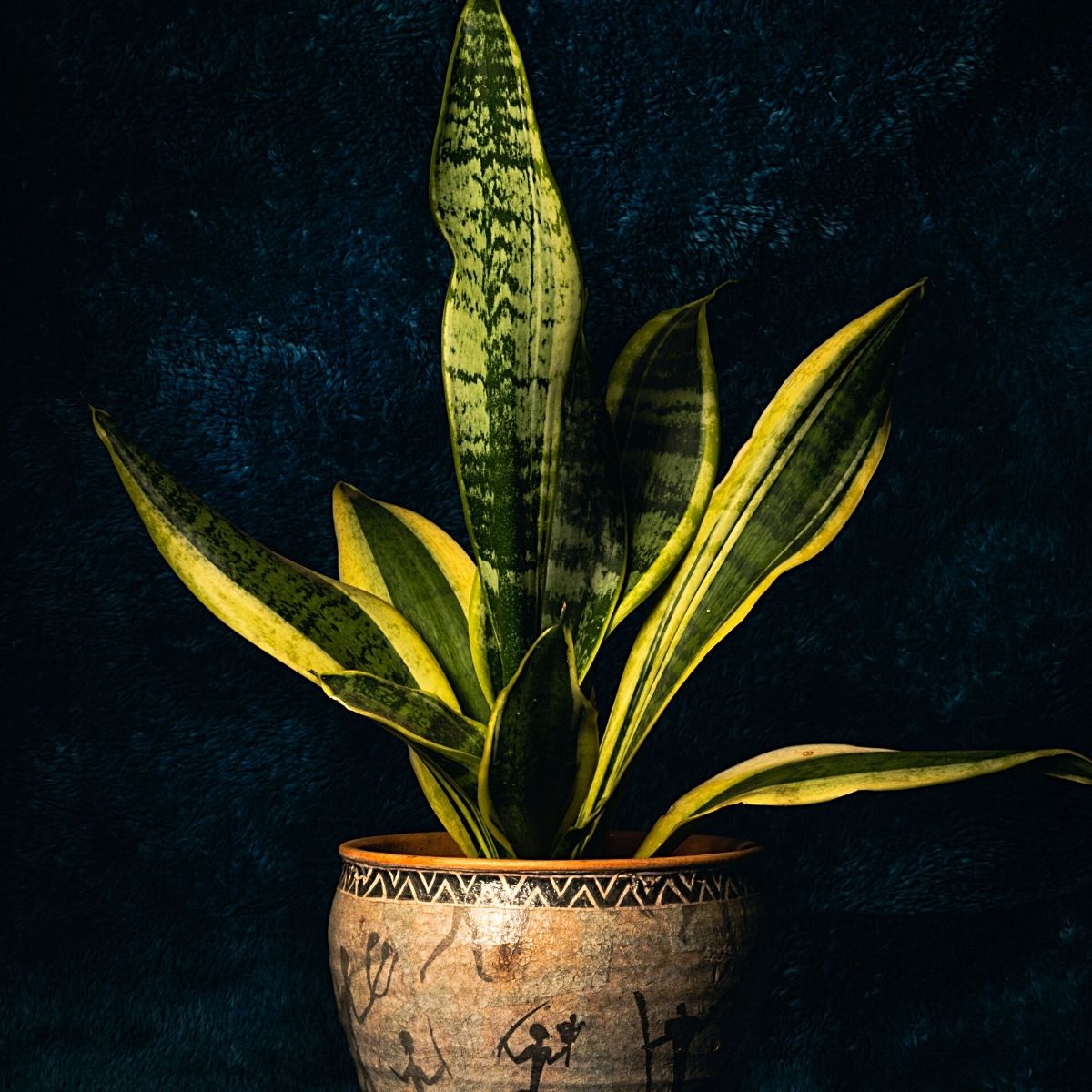
Photo by Sandile on Pexels
Most snake plant varieties are simple and low-maintenance house plants that are easy to grow but hard to kill. They can create dramatic statements in your home or outside, and you can easily plant multiple varieties together without a problem because most cultivars have similar growing conditions. They’ll provide height and eye-catching looks for years to come.

